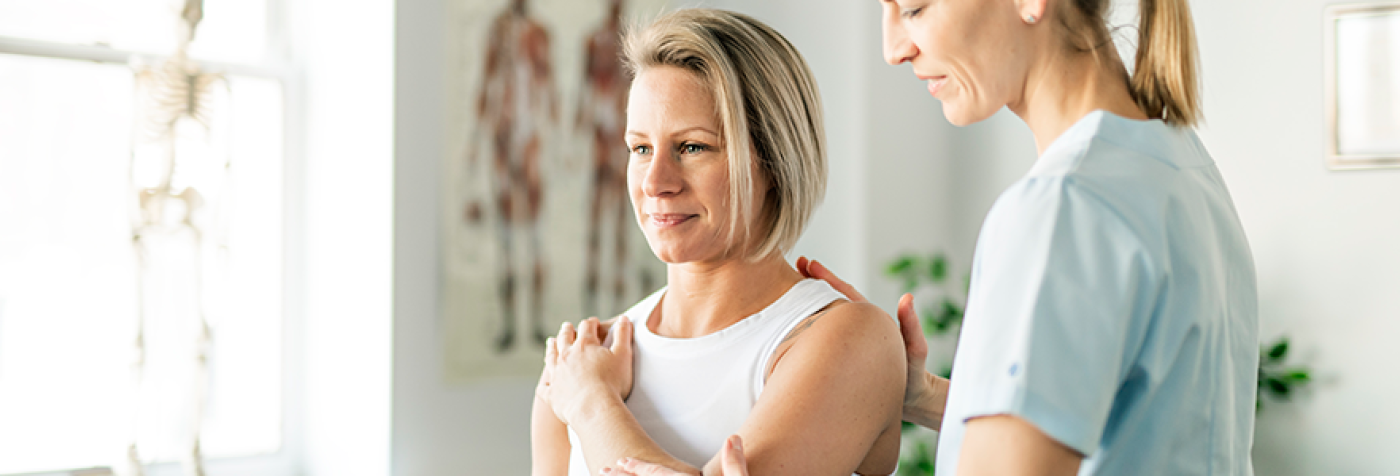Acromioclavicular (AC) and sternoclavicular (SC) joint injuries

The sternoclavicular (SC) joint connects the collarbone (clavicle) to the breastbone (sternum). At the other end of the collarbone, the acromioclavicular (AC) joint connects the clavicle to the acromion, the highest point of the shoulder blade. These joints help keep the shoulder stable and secure.
If one or both are injured, patients may experience shoulder separation, shoulder joint pain or a limited range of movement in the arm, along with other symptoms.
Symptoms
- Bruising, pain, swelling or tenderness over the affected joint
- Crunching or grinding sound when moving the arm
- Deformity or bump where the clavicle or scapula has moved
- Limited range of arm motion
Prevention
AC and SC injuries are often caused by:
- Accidents and sports. Proper safety precautions and equipment — such as seat belts, helmets, pads and guards, among others — should be used when riding a bicycle, traveling by motor vehicle or participating in contact sports to help reduce the risk of these injuries.
- Falls. Hard falls are more common during contact sports, and people who are older or living with osteoarthritis may experience lighter falls that cause injury. Keep the house clear of clutter and install handrails and guardrails to help decrease the risk of falling.
- Osteoarthritis. Living a healthy lifestyle can help prevent the onset of osteoarthritis as people age. Maintain a healthy weight, control blood sugar, stay physically active and avoid physical injury to lower the risk.
Risk factors
- Age
- Osteoarthritis
- Participation in contact sports
- Previous AC or SC joint injury
Diagnosis
- Medical history and symptom review. The healthcare provider will ask about symptoms, medical history, overall health and whether the patient has been injured or in an accident.
- Physical examination. The healthcare provider will examine the area of the injury for deformities, pain and other symptoms, check the range of motion in the arm, and determine if there is good blood flow to the hand and fingers. The healthcare provider may ask the patient to hold a weight to make the deformity more pronounced.
- Imaging studies. Standard X-rays are normally enough for AC joint injuries, but SC joint injuries may require other imaging methods such as CT or MRI scans.
Treatment
- Conservative management. Nonsurgical treatments may be enough to address AC or SC joint injury symptoms, especially if the injury is minor. Treatments may include pain medication, immobilization with a sling or the use of cold packs.
- Closed reduction. For SC joint dislocations, the health care provider may try to move the clavicle back into place without surgery. This nonsurgical treatment is usually performed in the operating room and may require the use of general anesthesia or muscle relaxants.
- Surgical treatment. Surgery for AC and SC joint injuries may be necessary if pain or deformities are severe. The likelihood of surgical intervention increases if the joint is completely dislocated.
Follow-up care
- Patients may need physical rehabilitation to restore motion, strength and flexibility to the affected arm.
- Patients may be given lifting and activity restrictions to aid with healing.
